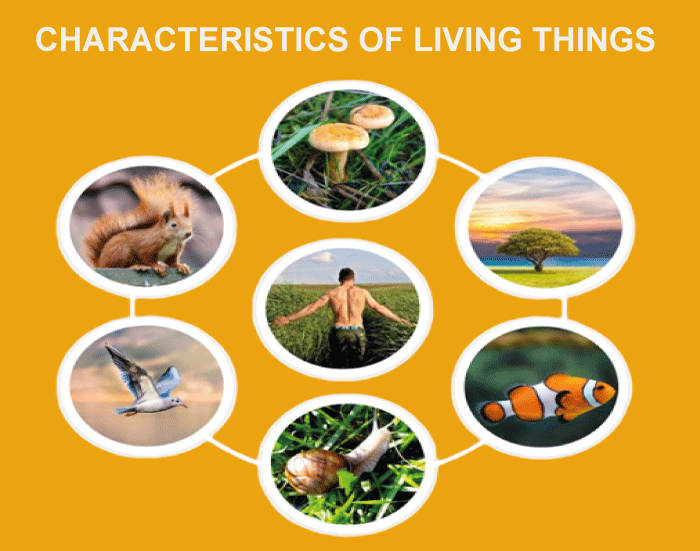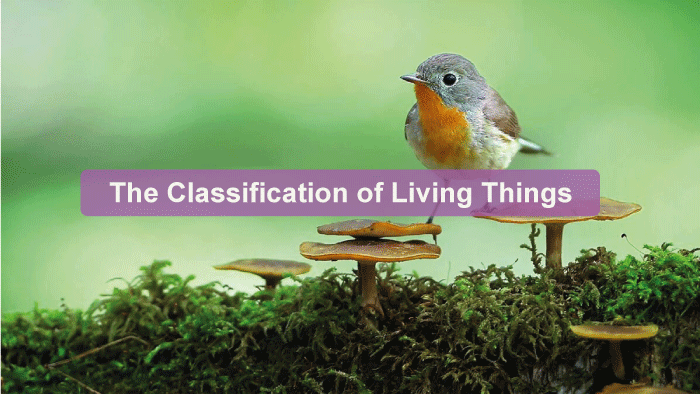Living Things DefinitionWhat are Living Things?Any creature or biological form that exhibits the traits of existence or being alive is called a "living thing." There are a wide variety of living and non-living creatures around the globe. Living creatures include bacteria, fungi, algae, protozoans, plants, and animals. Moreover, living things have senses like sight, hearing, smell, taste, and touch and they can breathe, eat, and grow. A cat is an example of a living thing as it requires food, drink, room, and shelter as an animal. Organisms are another word for living things. Because living things act differently from non-living objects, scientists can distinguish between the two. According to scientists, there are roughly 1.5 million different living organisms on Earth. The Abilities of Living Beings:With the use of their energy, all living things can move. Plants remain stationary, but they move their leaves to catch the sunlight. The simplest life forms just have a feeling of hot and cold or can only feel when they are touched. Chemicals are ingested and expelled by living beings. Carbon dioxide is exhaled, and oxygen is inhaled by animals. Green plants absorb carbon dioxide and exhale oxygen via their leaves. Green plants use sunlight to produce their sustenance. For energy, animals eat both vegetation and other animals. Organisms also release waste. They eliminate the unnecessary portion after ingesting nutrients. Living things evolve and grow. The size of a plant or animal increases when its cells divide. Another form of expansion is the creation of new components. Also, organisms procreate or bring forth new life. Whereas, animals bear children. Plants, from their seeds or spores, create new plants. 
Features of Living Things:1. A Structured System:Living things are structured systems. It may be single-celled, like a bacterium, or multicellular, like the cells that comprise animals and plants. The basic biological building block of an organism is a cell. The cell performs several cellular functions in an organized, systematic way. Protoplasm makes up a cell, and a plasma membrane surrounds it. Organelles are cytoplasmic structures suspended in the cell's cytosol and have distinct roles and functions. 2. Needs Power:Living creatures need energy to survive. Energy is crucial since it powers a cell's various metabolic processes. Through photosynthesis, light energy is transformed into chemical energy, which is one-way plants generate energy. Another method is cellular respiration, in which energy is obtained biochemically from an organic substance (such as glucose) and then stored in an ATP-like energy-carrying biomolecule for use later such as in humans. 3. Reproductive Potential:A live thing can reproduce. Living creatures have two ways of making duplicates of themselves: sexual reproduction and asexual reproduction. In sexual reproduction, the two parents' male and female sex cells combine to form a zygote, eventually growing into a being of its kind. Contrarily, asexual reproduction is a type of reproduction that does not employ sex or gametes for fertilization. Only one parent produced the offspring. Examples include vegetative reproduction, budding, and binary fission. 4. Growth:Typically, the weight and number of distinct organisms increase to indicate growth. People continue to age outwardly after a certain point, but if cells continue to divide, new cells will continue to replace the old ones in the body. Due to the build-up of particles, some non-living entities, like the growth of mountains, also appear to grow. Cell division leads to the growth of living organisms. Hence, growth is a distinguishing trait. 5. Metabolism:Catabolism and anabolism are two types of reactions that make up metabolism. Catabolism involves chemical changes that disintegrate large molecules into smaller ones, releasing energy. Anabolism is a chemical process where molecules are constructed from smaller building blocks. Both reactions occur in living things. 6. Responsive to Stimuli:Living things react to stimuli and changes in their surroundings. It can detect environmental changes, particularly when cells acting as receptors are present. For example, people have five basic senses: hearing, sight, smell, taste, and touch. They can notice changes in their environment and adjust to them. 7. Movement:Moving is a sign of life. A living organism may react appropriately to stimuli because it can perceive them in its environment. Animals migrate, for instance, to forage, avoid predators, and look for a suitable partner. While plants have a very limited range of mobility, mammals can move at will. 8. Death:Death is a natural part of life. An organism has a life, and this life finally ends. Biological aging is referred to as senescence. It occurs when an organism slowly deteriorates throughout its life. As time passes, the organism becomes less and less able to function and respond to stress. It consequently becomes more susceptible to illnesses and dysfunction. On the other hand, some living creatures appear to avoid death and are said to be immortal. For example, Turritopsis doom, a jellyfish can reverse the effects of aging, regenerating flatworms, and virtually unbreakable tardigrades. Noncellular Life:Do viruses have a life? For so long, this issue has generated intense discussion among biologists. As they seem to be living while they are inside their host, some people would classify viruses as living beings. They have genetic material, reproduce, and change through natural selection. Others, however, do not perceive them as living creatures because they virtually cease to exist when removed from their host. Viruses are unable to multiply on their own. They depend on the machinery of the host cell to do this. Thus, viruses are neither wholly alive nor dead. Viruses appear to be lifeless and dormant while they are outside of their host. Once within their host, they are active and could multiply and use the host cell's structures. Another type that appears to be noncellular life is viroid. They spread disease. Classification of Living Things:
Plants and animals are the two broad categories into which living things are divided. Both are eukaryotic and are differentiated according to their traits, manner of nourishment, reproductive process, etc.
Living things are extremely diverse and may be discovered almost everywhere on Earth. Scientists have divided living things into many kingdoms to grasp this diversity better. They divided them into five major kingdoms: Animalia, Protista, Fungi, Plantae, and Monera. Multicellular organisms that eat other organisms or organic substances make up the Animalia kingdom. For example, fish, amphibians, birds, and reptiles, are included in this kingdom. The multicellular organisms that make their sustenance make up the kingdom Plantae. For example, trees, shrubs, grass, and herbs. The multicellular creatures that make up the fungi kingdom consume organic materials. Molds, yeasts, and other creatures are members of this kingdom. Unicellular and multicellular creatures that may be either heterotrophic or autotrophic make up the protozoa kingdom. Amoebae, algae, and protozoans are among the creatures that belong to this kingdom. The unicellular creatures of the Monera kingdom can either be autotrophic or heterotrophic. Both bacteria and cyanobacteria are members of this kingdom. Effects of Humans on the Variety of Life:Since we are the most prevalent species on Earth, our actions have significantly impacted the variety of life on Earth. In addition to altering our environment, we have spread exotic species throughout the globe and driven numerous species to extinction. It has significantly impacted our world's biodiversity, so it is critical to comprehend why these changes have occurred. Habitat destruction and introducing new species to regions have long been practices of humans. When early humans started destroying forests to make way for communities and agriculture, this got going. It got harder for many animals to live in the new environment as more and more land was destroyed. In many areas, this has caused a decline in biodiversity. Moreover, people have spread alien animals to new geographical areas. It is common for exotic species to be invasive, outcompeting local species and limiting the variety of life in a region. A significant factor in the extinction of species has been humans. Due to poaching, the destruction of habitats, and climate change, many species have become extinct. This has significantly impacted the diversity of life on this planet, and to stop further losses, it is crucial to understand the causes of these species extinction. Overall, the diversity of life on Earth has been greatly impacted by humans. We have altered environments, exterminated species, and brought in foreign ones. All of this has significantly impacted our world's biodiversity, so it is critical to comprehend why these changes have taken place. We can only try to protect the incredible diversity of life on Earth if we are aware of these effects. ConclusionFor our world to remain healthy and function properly, preserving the diversity of life is crucial. Understanding the enormous variety of living organisms and their functions in our ecosystems is crucial. We can contribute to ensuring that our planet is healthy and functional for future generations by maintaining the diversity of life. Also, sustaining life's diversity allows us to investigate and discover more about various living things. Ultimately, protecting life's diversity is crucial to human existence and the planet's survival. We can ensure that our planet continues to be a dynamic and healthy place to live and that future generations may enjoy its magnificent diversity by realizing the significance of this diversity and taking action to safeguard it.
Next TopicRNA Definition
|
 For Videos Join Our Youtube Channel: Join Now
For Videos Join Our Youtube Channel: Join Now
Feedback
- Send your Feedback to [email protected]
Help Others, Please Share










